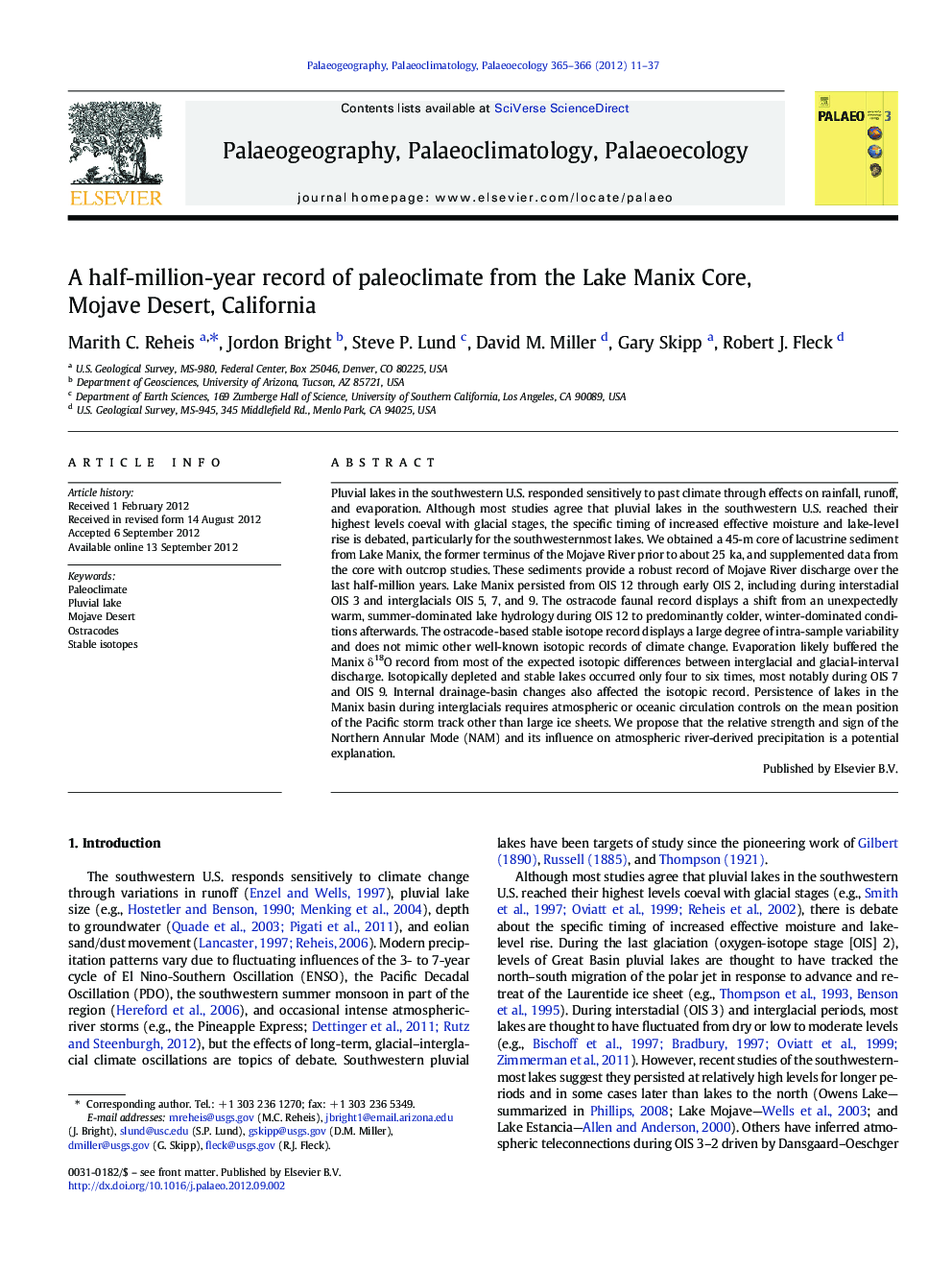| Article ID | Journal | Published Year | Pages | File Type |
|---|---|---|---|---|
| 4466725 | Palaeogeography, Palaeoclimatology, Palaeoecology | 2012 | 27 Pages |
Pluvial lakes in the southwestern U.S. responded sensitively to past climate through effects on rainfall, runoff, and evaporation. Although most studies agree that pluvial lakes in the southwestern U.S. reached their highest levels coeval with glacial stages, the specific timing of increased effective moisture and lake-level rise is debated, particularly for the southwesternmost lakes. We obtained a 45-m core of lacustrine sediment from Lake Manix, the former terminus of the Mojave River prior to about 25 ka, and supplemented data from the core with outcrop studies. These sediments provide a robust record of Mojave River discharge over the last half-million years. Lake Manix persisted from OIS 12 through early OIS 2, including during interstadial OIS 3 and interglacials OIS 5, 7, and 9. The ostracode faunal record displays a shift from an unexpectedly warm, summer-dominated lake hydrology during OIS 12 to predominantly colder, winter-dominated conditions afterwards. The ostracode-based stable isotope record displays a large degree of intra-sample variability and does not mimic other well-known isotopic records of climate change. Evaporation likely buffered the Manix δ18O record from most of the expected isotopic differences between interglacial and glacial-interval discharge. Isotopically depleted and stable lakes occurred only four to six times, most notably during OIS 7 and OIS 9. Internal drainage-basin changes also affected the isotopic record. Persistence of lakes in the Manix basin during interglacials requires atmospheric or oceanic circulation controls on the mean position of the Pacific storm track other than large ice sheets. We propose that the relative strength and sign of the Northern Annular Mode (NAM) and its influence on atmospheric river-derived precipitation is a potential explanation.
► We obtained a 45-m core from Lake Manix, former terminus of the Mojave River ~ 475–25 ka. ► Lake Manix persisted from OIS 12 through early OIS 2, except during interglacial OIS 11. ► Ostracode faunas record a surprising summer-dominated hydrology only during OIS 12. ► Highly variable stable isotopes buffered by evaporation persist in interglacials and glacials. ► Internal drainage-basin changes also affected the isotopic record.
